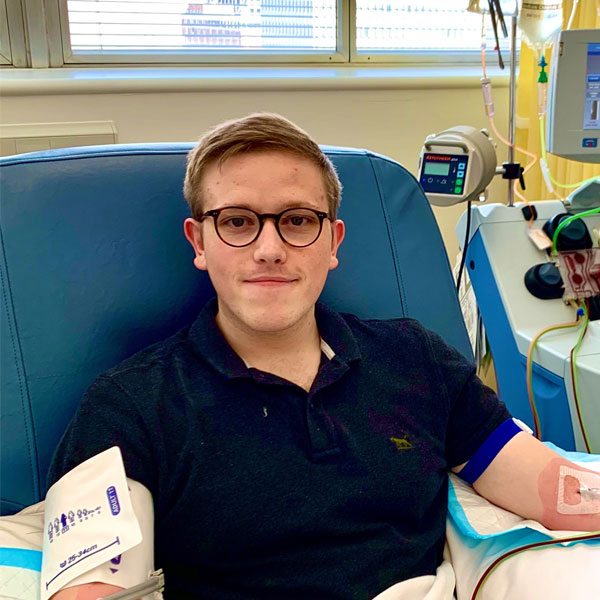
What happens after a blood stem cell donation? By now you’re probably already familiar with stem cell donation as a life-saving treatment for patients with blood cancer or bone marrow failure syndromes like aplastic anaemia, but there’s more to this procedure than meets the eye. Beyond its primary purpose, blood stem cell transplantation can bring about unexpected outcomes for patients dealing with a range of life-threatening conditions.
From fatigue to freedom
Life with a bone marrow failure or blood cancer diagnosis often involves fatigue, frequent infections, and anaemia. But with successful blood stem cell transplantation, the story takes a turn for the better. As the transplantation restores normal blood cell production and immune function, the shackles of disease-related limitations can begin to loosen. Patients often regain their energy, bid farewell to constant infections, and experience a renewed zest for life. It’s a remarkable journey from surviving to thriving.
Taking the good with the bad
A potentially serious complication of stem cell transplantation is Graft-versus-host disease (GvHD). GvHD occurs when the donor’s T cells (the graft) view the patient’s healthy cells (the host) as foreign, and attack and damage them. Graft-versus-host disease can be mild, moderate or severe.
New research is providing hope in this area though, with the development of new treatments that can help to prevent or manage GvHD. For example, some researchers are investigating the use of immunotherapy to create “tolerance” in the recipient’s immune system, which would allow them to accept the transplanted cells without any problems.
While GvHD can negatively impact a patient’s quality of life, it can have significant benefits. The same immune response responsible for attacking the patient’s healthy cells also monitors and destroys any surviving cancer cells. This is called the Graft-versus-Leukaemia (GvL) effect.
The GvL effect is a powerful immune response that targets cancer cells. This has been shown to significantly reduce the risk of relapse while improving long-term survival.
Unlocking new possibilities
While blood stem cell transplantation is commonly associated with treating bone marrow failure syndromes like aplastic anaemia and blood cancers like leukaemia, lymphoma, and multiple myeloma, its potential reaches far beyond those boundaries. It is also highly effective in treating other non-malignant conditions such as inherited immune disorders and certain metabolic disorders, to name a few. By “resetting” the immune system, transplanted stem cells can help suppress the abnormal immune response responsible for these conditions and promote healthier immune function.
Thanks to science, new discoveries are made each year, allowing more and more conditions to be treatable with the use of bone marrow and stem cells.
Unexpected side effects
Blood stem cell transplantation may occasionally bring about unexpected side effects. Some transplant recipients have reported changes in their sense of taste or smell, which can influence their food preferences. Additionally, in some cases, new allergies or sensitivities to certain foods or substances have been observed. The infusion of younger stem cells during transplantation may even have rejuvenating effects on the aging immune system.
While these effects are not universal and require further research to understand their underlying mechanisms, they add an intriguing layer to the transplantation journey.
Expanding the boundaries of medical knowledge
Each blood stem cell donation contributes to the advancement of medical knowledge. Researchers and medical professionals gain valuable insights into the underlying mechanisms of diseases through the transplantation process and its outcomes. This knowledge deepens our understanding of how diseases develop and progress, leading to improved diagnostic methods and more effective therapeutic strategies. Every donation brings us closer to conquering the mysteries of health and disease, paving the way for a brighter future.
Empowering lives as a donor
By joining the blood stem cell registry, you not only have the power to save lives but also inspire others to join this important cause. Your act of generosity serves as a catalyst for raising awareness about the significance of donation and encourages others to make a life-saving difference. Members of the registry who have donated in the past often tell us it’s a journey that brings personal satisfaction and emotional fulfillment.

“It’s amazing to think that a simple act of donating blood stem cells can have such a profound impact on someone’s life.”
— Lachlan, blood stem cell donor
By simply signing up for the donor registry, you have already played a significant role in improving the lives of those in need. Together, we can make a lasting impact and pave the way for a brighter and healthier future.